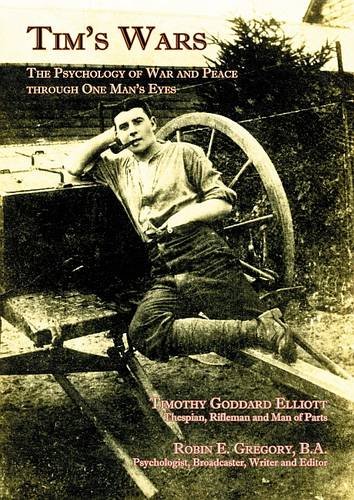|
|
|
9th (Queen Victorias Rifles) Battalion, London Regiment
9th (County of London) Battalion, The London Regiment, The 1st Queen Victoria’s Rifles are the descendants of The Duke of Cumberland’s Corps of Sharpshooters which was inaugurated in September 1803. In 1908, when the Territorial Force was created, the 9th (County of London) Battalion, The London Regiment (Queen Victoria’s Rifles) was allocated to the 3rd London Brigade, 1st London Division.In August 1914 they had their HQ at 56 Davies Street and were part of 3rd London Brigade, 1st London Division.
They Moved on mobilisation to Bullswater, going on in September to Crowborough. Early in the Great War, the 1st London Division was broken up to provide reinforcements for the BEF and on 5th November 1914 the 9th Battalion landed at Havre and joined 13th Brigade, 5th Division. The battalion fought with 5th Division throughout 1915, at Hill 60, Second Ypres and St Julien. In February 1916 the 56th Division was formed in France and the 9th Battalion were allocated to the 169th Brigade. It fought with this division on the Somme, Arras, Third Ypres and Cambrai and transferred to the 58th Division in February 1918 where it amalgamated with the 2/9th to become the 9th Battalion.
4th Aug 1914 Move
29th of November 1914 Infantry Distribution 
2nd of December 1914 A Moonlit Night 
5th of December 1914 Relief Complete 
11th of December 1914 Battalions Strengthened 
14th of December 1914 French on the Offensive 
15th of December 1914 Operations Resumed 
1st of January 1915 POW Taken
3rd of January 1915 Patrols Active
5th of January 1915 Hostile Patrol Engaged 
7th of January 1915 Very Wet Weather 
9th of January 1915 Trenches Baled Out 
28th of January 1915 Active Snipers 
1st of February 1915 No 7 Trench Hit
2nd of February 1915 Artillery in Action
3rd of February 1915 Snipers Silenced 
7th of February 1915 Sectors Rearranged 
18th of February 1915 Grenades Cause Confusion 
21st of February 1915 8th Howitzers Leave 
23rd of February 1915 B Sector Shelled
27th of February 1915 Brigade Relief 
27th of February 1915 Message 
28th of February 1915 Artillery Reorganised 
1st of March 1915 Quiet 
6th of March 1915 No Hostile Patrols 
7th of March 1915 A Searchlight Hit 
8th of March 1915 Relief 
10th of March 1915 POW Taken 
13th of March 1915 Booby Trap 
14th of March 1915 Artillery Quiet 
19th of March 1915 Patrols 
20th of March 1915 
22nd of March 1915 Quiet Night
30th of March 1915 Hostile MG Damaged? 
7th of April 1915 Mostly Quiet 
8th of April 1915 Another Quiet Day
11th of April 1915 Train Fired On 
17th of April 1915 Mines Exploded 
18th of April 1915 Action Continues 
19th of April 1915 Holding Hill 60 
20th of April 1915 Quiet 
28th of April 1915 Report 
1st of May 1915 Gas Casualties 
5th of May 1915 A Counter Attack 
6th of May 1915 Another Attack Fails 
7th of May 1915 Attack Ordered 
11th of May 1915 No Retirement Planned 
18th of May 1915 Revenge Shelling 
22nd of May 1915 All Quiet 
24th of May 1915 Much Shelling at Night 
3rd of June 1916 Quiet Day 
2nd of July 1915 A "Good Shoot"
8th of July 1915 Normal Situation 
13th of July 1915 Enemy Active on Canal 
15th of July 1915 Reliefs 
26th of July 1915 Concentration Completed
30th of July 1915 Detrainment
2nd of August 1915 Trench Inspection
5th of August 1915 Quiet Day
8th of August 1915 Two Batteries Join Division 
15th of August 1915 3 Salvos Fired 
19th of August 1915 Hostile Patrol 
23rd of August 1915 Normal Situation 
25th of August 1915 Hostile Marsh Patrol 
1st of September 1915 Enemy Periscopes Hit 
2nd of September 1915 Our Transport Shelled 
10th Sep 1915 Excitement Guaranteed
10th of September 1915 Enemy Hit Dummy Battery 
11th Sep 1915 Last day of Derby Scheme Recruitment
11th of September 1915 Changes of Command 
17th of September 1915 German Post Hit 
23rd of September 1915 Hostile Patrol Seen 
24th of September 1915 Wet Weather 
1st of October 1915 Snipers Active 
3rd of October 1915 Battalion Dispositions 
4th of October 1915 New Biplane Spotted 
7th of October 1915 German Field Guns Active 
11th of October 1915 Promiscuous Whizzbangs 
13th of October 1915 Reliefs 
16th Oct 1915 The Derby Scheme
18th of October 1915 Noisy Germans 
25th of October 1915 German Mine Exploded 
27th of October 1915 German Work Destroyed 
31st of October 1915 Unusual Activity 
18th of November 1915 Transport Heard 
22nd of November 1915 Three Enemy Killed 
23rd of November 1915 Heavy Traffic Heard 
30th of November 1915 Grenade Attack Successful 
1st Dec 1915 Derby Scheme Armlets
19th of December 1915 Patrol Out
20th of December 1915 Deserter Taken
1st of January 1916 Night-time Shelling
2nd of January 1916 Direct Hits 
10th Jan 1916 Group System Reopens
10th of January 1916 Battalion Relief 
13th of January 1916 5th Division in Reserve
29th of January 1916
1st of February 1916
4th of February 1916
9th February 1916 Call Ups
11th of February 1916 A New Area
2nd June 1916 Relief orders
3rd June 1916 German mine thrower activity
18th of May 1917 Training (including gas drill)
20th May 1917 Relieved the Queen Victoria Rifles.
10th Jun 1917 Reliefs
If you can provide any additional information, please add it here.
|
| Want to know more about 9th (Queen Victorias Rifles) Battalion, London Regiment? There are:109 items tagged 9th (Queen Victorias Rifles) Battalion, London Regiment available in our Library There are:109 items tagged 9th (Queen Victorias Rifles) Battalion, London Regiment available in our Library 
These include information on officers, regimental histories, letters, diary entries, personal accounts and information about actions during the Great War.
|
|
Those known to have served with9th (Queen Victorias Rifles) Battalion, London Regiment during the Great War 1914-1918. - Attkins Leslie. Rflmn. (d.1st July 1916)
- Bacon Harry William. Pte.
- Bennett William James. Rflmn.
- Blackburn John Edward. Pte. (d.14th April 1917)
- Burleigh William Cecil. Pte.
- Burt John Alexander . Cpl. (d.1st July 1916)
- Coles Cecil Frederick Gottlieb. Sgt. Bandmaster (d.26th Apr 1918)
- Dady Joseph Alfred. Rfn. (d.14th Aug 1917)
- Floyd George Augustus. Rflmn
- Hedges VC. Frederick William. 2nd Lt.
- Jones Stephen James. Rflmn. (d.29th Sep 1916)
- Lilley John. Rflmn. (d.27th Sep 1917)
- Lowry Philip Archibald Nicholas. Rflmn. (d.14th April 1917)
- McVitie William Johnston. L/Sgt. (d.25th Sep 1915)
- Moulder Frederick Benjamin. Pte.
- Olley MM. Gordon Percy. Sjt.
- Parker John. Pte
- Pitcher Charles Robert. Pte.
- Robinson Cyril. Pte. (d.26th Sep 1917)
- Russ William Percy. Rifleman
- Simpson MC William John Sydney. Lt.
- Skingle Mark Leonard.
- Smith Arthur Douglas. Pte.
- Standcumbe John Frank. Rfm. (d.10th Apr 1917)
- Taylor Robert. Rflmn. (d.30th Nov 1917)
- Thelwell Harry Rowland. Lt (d.8th July 1916)
- Uglow William Ernest Taylor. Rflmn. (d.1st January 1915)
- Ward Percy Randall. Rfn (d.26th Mar 1918)
- Watts Ernest. (d.9th Sep 1916)
- Wilson Thomas Douglas. Pte.
- Yetton William Valentine. Rfmn. (d.28th Mar 1918)
All names on this list have been submitted by relatives, friends, neighbours and others who wish to remember them, if you have any names to add or any recollections or photos of those listed,
please Add a Name to this List
Records of 9th (Queen Victorias Rifles) Battalion, London Regiment from other sources.
|
|
The Wartime Memories Project is the original WW1 and WW2 commemoration website.

- 1st of September 2024 marks 25 years since the launch of the Wartime Memories Project. Thanks to everyone who has supported us over this time.
|
Want to find out more about your relative's service? Want to know what life was like during the Great War? Our
Library contains many many diary entries, personal letters and other documents, most transcribed into plain text.
|
Looking for help with Family History Research?
Please see Family History FAQ's
Please note: We are unable to provide individual research.
|
|
Can you help?
The free to access section of The Wartime Memories Project website is run by volunteers and funded by donations from our visitors.
If the information here has been helpful or you have enjoyed reaching the stories please conside making a donation, no matter how small, would be much appreciated, annually we need to raise enough funds to pay for our web hosting or this site will vanish from the web.
If you enjoy this site
please consider making a donation.
Announcements
- 26th Mar 2025
Please note we currently have a massive backlog of submitted material, our volunteers are working through this as quickly as possible and all names, stories and photos will be added to the site. If you have already submitted a story to the site and your UID reference number is higher than
265607 your submission is still in the queue, please do not resubmit.
Wanted: Digital copies of Group photographs, Scrapbooks, Autograph books, photo albums, newspaper clippings, letters, postcards and ephemera relating to the Great War. If you have any unwanted
photographs, documents or items from the First or Second World War, please do not destroy them. The Wartime Memories Project will give them a good home and ensure that they are used for educational purposes. Please get in touch for the postal address, do not sent them to our PO Box as packages are not accepted.
|
World War 1 One ww1 wwII greatwar great battalion regiment artillery
Did you know? We also have a section on World War Two. and a
Timecapsule to preserve stories from other conflicts for future generations.
|
|
|
Rflmn. Robert Taylor 1st/9th (Queen Victoria's Rifles) Btn. London Regiment (d.30th Nov 1917) Robert Taylor was killed in action on the 30th of November 1917 and is commemorated on The Cambrai Memorial in France.
|
Rflmn. William James Bennett 9th (Queen Victoria Rifles) Btn. London Regiment Bill Bennett joined up on 1st September 1914 at the age of twenty. He was attested at the Davies Street Headquarters of the 9th Battalion, London Regiment, The Queen Victoria Rifles.
After basic training he went to France with the Battalion on 4th of November 1914.
Little is known of his war service but by 5th January 1915 he had been repatriated suffering from dysentery and having developed a severe stammer.
The cause of these two afflictions is not recorded. But he spent until 1st October 1916 in hospital in the UK and was then discharged as no longer fit for service.
Despite his relatively short time on active duty, he qualified for the 1914 Star, the War Medal and the Victory Medal. All of which are still proudly kept by his Grandaughter.
|
Cpl. John Alexander Burt 9th (Queen Victoria Rifles) Btn. London Regiment (d.1st July 1916) John Burt of the 9th London Regiment is buried in Gomecourt British cemetery no 2. He was reinterred at Gommecourt from his original burial place.
|
Rfmn. William Valentine Yetton 9th (County of London) Btn. London Regiment (d.28th Mar 1918) William Yetton was a relative who died in action.
|
Rfn Percy Randall Ward 9th Btn London Regiment (Queen Victoria's Rifles) (d.26th Mar 1918) Percy left a widow: Albertina Olga and a three year old daughter Joyce
|
Rflmn. William Ernest Taylor Uglow 1/9th (Queen Victorias Rifles) Battalion London Regiment (d.1st January 1915) William Uglow died as a direct result of an incendiary attack on the barn in which he was sleeping early morning on 1st of January 1915 near Ypres. He has no known grave. His name recorded on the Menin Gate.
|
Rflmn George Augustus Floyd 9th (Queen Victorias Rifles) Battalion London Regiment George Floyd volunteered for the QVR in 1914. He kept a diary and was good at drawing painting, he recorded his work with unit at hill 60 and other battles including the first day of the Somme as a bomber, he was first over the top, a shell exploded over head and blow a hole through his shoulder. He was unconscious when a medic came along gave him a pain killer of some sort and he was left there over night.
He woke up and heard voices called out they turned out to be Germans who started shooting at him, it went quiet so he started clawing to the other end, it took a while to convince a post that he was British but they helped him back to the trench.
He started walking with help got fed up with how long it was taking, so to much up set got on the top of the communication trench they gave him help back to hospital tent. Later he was sent back to England and then after recovering he came to train new recruits.
His diary was put into a book but only in limited edition as him cousin was a publisher, but Grandpa did not want it released in case it upset anyone.
My mother did a family tree and noticed his best friends name in a mag and wrote to them they contacted my mother asking for more information about Frank Boggis he survived the day time of the Battle of the Somme and they got to there objective, only to be killed at 5pm, tea time that day.
Mum gave them the location of his grave and they wrote to say thank you and later to say they had just returned from visiting their uncle's grave.
Grandpa visited the grave on the ten year anniversary in 1926.
Many other stories but I hope hope this is a short record of his dairies which his cousin put on show at Cambridge university as he was a lecturer there in history.
|
Pte. John Edward Blackburn 9th (County of London) Btn. London Regiment (d.14th April 1917) John Blackburn was born in 1889 at Islington, Middlesex, to Annie Louise Thompson, age 25, and John Blackburn, age 27. He had four brothers and four sisters.
He was a musician, and travelling pianist.
He married Lilian Rachel King, 26 Apr 1908 at Bromley, Middlesex, England. They had two children, one boy and one girl.
He enlisted, serving with the 9th (County of London) Battalion (Queen Victoria's Rifles) in France and Flanders.
John was killed in action at Arras, on the 14th of April, 1917.
|
Pte. Cyril Robinson 9th Btn. London Regiment (d.26th Sep 1917) Cyril Robinson is commemorated on The Great War Memorial in the Church of St. Mary the Virgin, Corringham, Essex. I am researching all the names recorded and Cyril is one of them.
He was born in Ashford, Kent in 1895 and was living there with his family in 1911 when the census was taken. He must have moved to Corringham after this time. When he died a War Gratuity of £4 14s 5d was paid to his widow Kathleen. I have found a marriage of a Cyril Robinson to a Kathleen M. Walter in Newark, Nottinghamshire in 1917.
|
Pte. William Cecil Burleigh 9th Btn. London Regiment William Burleigh was a Bank Clerk, born in 1881. He served in 9th Londons in France/Flanders from 29th June 1915 until transferred to Royal Flying Corps in August 1917. Commissioned into RAF in April 1918 and served with 57th Squadron in France in the summer and autumn 1918, until released in Jan. 1919.
He returned to work as bank clerk after war and died in London in Dec. 1939.
|
Rflmn. Philip Archibald Nicholas Lowry 1/9th (Queen Victoria's Rifles) Btn. London Regiment (d.14th April 1917) Philip Lowry was the younger of two brothers to join the Queen Victoria's Rifles. He was killed in action aged 21 years and is ommemorated on the Arras Memorial.
|
Pte. Arthur Douglas Smith 9th Btn. London Regiment My grandfather, Arthur Smith, was a rifleman in the 9th London Rifles. He was living in Chelsea at the time and my grandmother told me he was gassed and was at Ypres. They met at Dovercourt, Suffolk and in March 1918 she came down to London to marry him; he was still in the Army. She told me when he returned from the war he used to have nightmares at night and died as a result of the gassing at the age of 38. He was born in 1896 and left a wife and three young boys. She said that after he died her children were tested every year for lung illnesses.
|
Rflmn. Stephen James Jones 1/9th (Queen Victoria Rifles) Btn. London Regiment (d.29th Sep 1916) Stephen Jones served with the Queen Victoria Rifles, he was attached to 169th Trench Mortar Battery when he was killed. His son was born on 4th September 1916. It is not known if he was aware of the boy being born.
|
Pte. Frederick Benjamin Moulder 9th Btn. London Regiment Frederick Moulder served with the 9th Btn. London Regiment.
|
Pte. Harry William Bacon 9th (Queen Victorias Rifles) Btn. London Regiment My Grandfather, Harry Bacon, was severely wounded at Gommecourt on 1st July 1916 on the first day of the Battle of The Somme. This is an extract from his diary, written in August in Le Treport hospital.
"On evening of 30th June 1916 marched up to trenches and took up placers in front trench. Our company was first to go over.
At 7:30am next morning over we went, under heavy bombardment from both sides. The Germans got wind of what was coming. I managed to get out of the trench and pushed forward as well as I could. I had only gone about 30 yards when I was hit by a piece of shrapnel in the stomach. It felt like a punch in the stomach and winded me.
I tried to go on, but crawled into a shell hole which just covered me from rifle bullets. I stopped here for a bit but eventually chanced my luck and got back to our trenches and got to the dressing station. It was a miracle I did not get hit getting back.
From the dressing station I got sent straight down the line to No.16 General Hospital Le Treport."
My Grandad was medically discharged and never returned to active service. He died in 1959 aged 65
|
Lt. William John Sydney Simpson MC 8th Btn. Middlesex Regiment 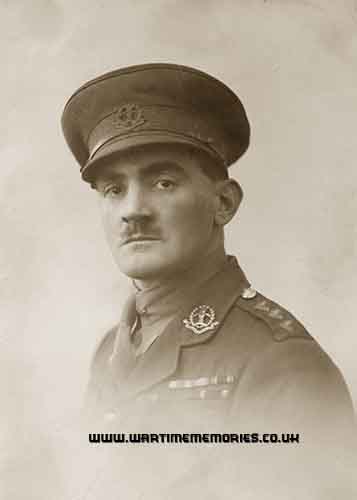 Bill Simpson originally enlisted as Rifleman 580 in the the 9th London Regiment (Queen Victorias Rifles) Territorial Force on the 4th of January 1909. He was embodied on 5th of August 1914 and posted to France with the QVRs on the 14th of November 1914. He was appointed Lance Corporal and Acting Corporal on the 28th of December 1914. The QWVRs were engaged in the Battle of Hill 60 on 21st of April 1915 and Cpl Simpson returned to England on the 27th of April, presumably because he was injured.
He was commissioned as 2nd Lieutenant in the the Middlesex Regiment and posted to the 4/8th Battalion on the 23rd of August 1915. He returned to France on the 5th of September 1915, joining the 8th Btn.
At the Battle of Loos on 25th of Sept 1915 the 8th Middlesex were in support, holding trenches with machine guns and carrying tools and water.
At the Battle of Ginchy on the Somme on 9th of Sept 1916 the 8th Middlesex made a Trench assault, where Lt W.J.S. Simpson was injured. At the the Battle of Flers-Courcelette 15th to 22nd Sept they were in a close assault at Bouleaux Wood. In the First Battle of the Scarpe and Vimy Ridge: 9th to 14th of April 1917 the 8th Middlesex made an assault over no-mans land to take trenches on 9th and final capture of village of Neuville Vitasse with further bombing of trenches on 11th.
William was promoted to Lieutenant on the 1st of July 1917.
During the Battle of Langemark between the 16th and 18th of August 1917 the 8th Middlesex made an assault under machine gun fire and counter attack including aerial attack.
At the battle of Cambai on 20th to 21st of Nov 1917 they mounted a decoy attack and during the capture of Bourlon Wood on 23rd to 28th of Nov they were in support with decoys. The German counter attacks took place from the 30th Nov to 3rd of Dec they were in defence of captured trenches in Hindenburg Line where Lt. W.J.S. Simpson was captured.
He remained a POW for the rest of the war but was moved and interned in Switzerland on 2nd of October 1918. He was repatriated on 25th of December 1918. He was attached to the Royal Army Ordnance Corps Woolwich Arsenal from January 1919 and he was seconded to the Foreign Office Inter-allied Police Service. He was Chief of the Inter-allied Police in Rybrick Upper Silesia in 1921 and was engaged in the uprisings. He returned to Civilian life in 1926 and was recalled to Service on 10th of July 1939 and was appointed Lieutenant in the Royal Army Ordnance Corps, but was unfit for service overseas, he served in No 4 Training Battalion at Hillsea and Stirling until retiring in 1942. He died on the 3rd of November 1956.
|
Rflmn. Leslie Attkins 9th (Queen Victoria's Rifles) Battalion London Regiment (d.1st July 1916) Leslie Attkins played for Middlesex Wanderers FC before the war.
|
L/Sgt. William Johnston McVitie 9th Btn London Regiment (d.25th Sep 1915) William Johnston McVitie, Lance Sergeant 2780, enlisted in Camden Town and served in the 1st/9th Battalion the London Regiment. He was killed in action age 24 on the 25th September 1915 and is remembered at St. Paul's Church, Jarrow Cemetery and Loos Memorial. Panel 130 to 135. His medal card shows the award of the 1915 Star, War and Victory Medals and that he was killed in action.
William was born in Whitburn 1891, son of William and Margaret McVitie nee Hogg of 55 Monkton Terrace, Jarrow. In the 1911 census the family are living 10 Maughan Street, Newcastle with William(61)an engineering works millwright and Margaret his wife of 32 years. They had 5 children with three having survived. Only William(20) a colliery clerk, is living at home.
|
Pte. Charles Robert Pitcher 9th (Queen Victoria Rifles) Btn. London Regiment Charles Pitcher served with the 9th (City of London Queen Victoria Rifles) Battalion, London Regiment
|
Rifleman William Percy Russ 1/9th.London Regiment 3rd County of London Brigade William Percy Russ was the grandfather that I did not meet.
In peacetime he was a water pipe joint maker (a jointer.)
He was born on 9 April 1890, at 3, Bartley St., Cornwell Rd., Brixton Hill and returned there after WW1.
He served in WW1 as a Rifleman in the 9th London Regiment, (3rd. County of London Brigade.)
History off the net. 1/9th (City of London) Battalion TF (Queen Victoria's Rifles).
August 1914 : in Westminster. Part of 3rd London Brigade, 1st London Division.
November 1914 : left the Division and moved to France, landing at (Le) Havre on 5 November 1914.
27 November 1914 : transferred to 13th Brigade, 5th Division.
10 February 1916 : transferred to 169th Brigade, 56th Division.
1 February 1918 : transferred to 175th Brigade, 58th Division, absorbing 2/9th and becoming 9th Bn.
He was devastated by his wife (Nellie's) death and volunteered for Front Line duties. He sustained severe injuries which never healed.
As he was unable to cope with a young baby, other members of the Russ family (Fred and Ethel) stepped in to look after Helen, then 10 months old. She was then fostered in Reigate by Ethel's parents (the Whiting family.) When she returned to London after Mrs. Whiting, died she lived with Walter and Minnie Russ and their family for 3 years, before moving to stay with some of her Mother's relations.
After the war, William lived with his sister, Charlotte, until his death at the age of 44. Mum remembered her dressing his wounds.
He died of Pulmonary T.B. at 75, Lambeth Rd.
I sent for a copy of his War Record, but sadly, like 60% of the WW1 Army Records they were destroyed during WW2 by bombing, fire or water damage. I did however manage to get some information when I visited the PRO at Kew and a copy of his medal entitlement.
Attached is a copy of his War Medal entitlement. He doesn't seem to have got a war pension - in spite of his injuries.
|
Recomended Reading.Available at discounted prices.
|
This book highlights a remarkable legacy and is surely unique in chronicling a continuous record spanning not just the whole of the Great War but also the inter-war years. The editor / author has done a fantastic job bringing to life the terse entries Tim scribbled in the trenches while the mortars fell around him and placing them into context with the bigger picture. This little book is a compelling Pandora's box showing at once the growth of an impetuous youth into a mature family man, of a society from imperial to modern and of the reality of life in both war and peace 100 years ago. The diary entries themselves start off being somewhat terse and I was grateful for Robin Gregory's witty and very personal narrative to knit it all together. Later on, starting around 1917, the diary entries are much longer (apparently Tim had a bigger notebook!) wise, and absolutely fascinating. Here is a man fresh from the trenches predicting that the treaty of Versailles will cause World War II.
|
|
|







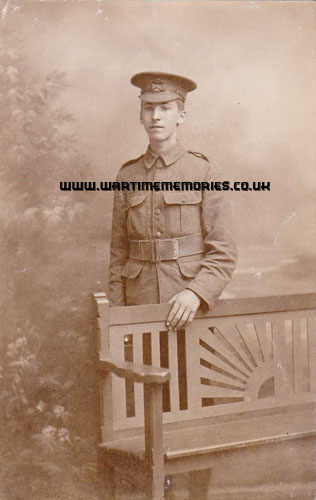
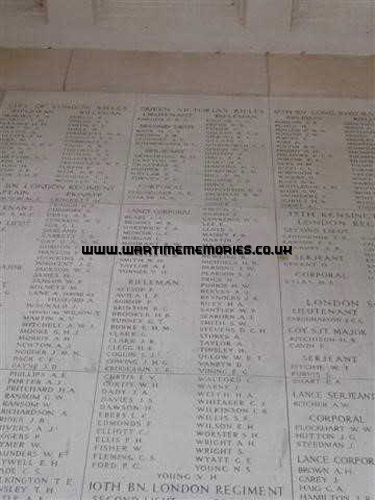

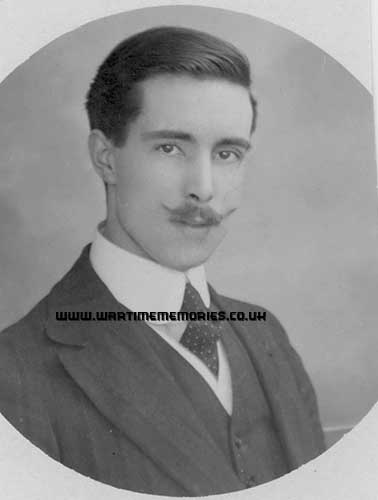
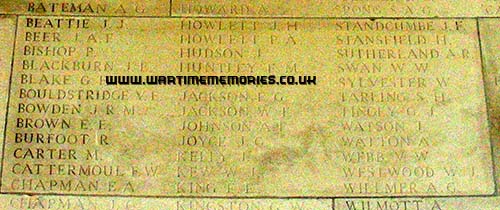
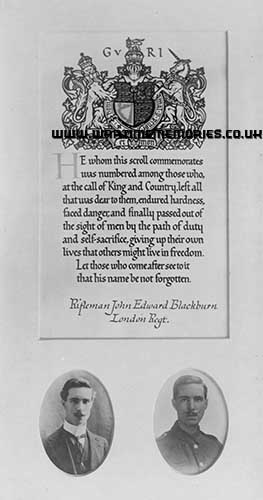

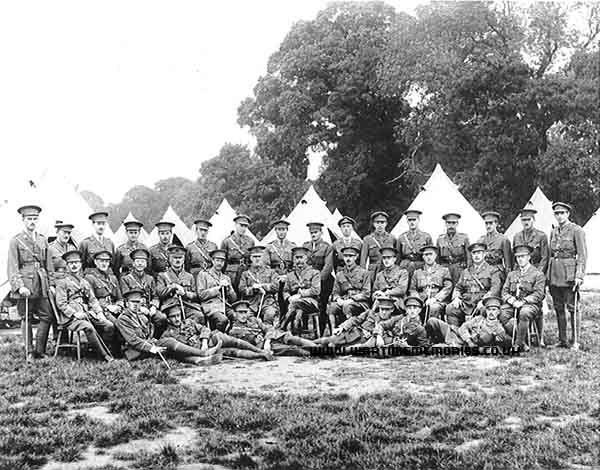
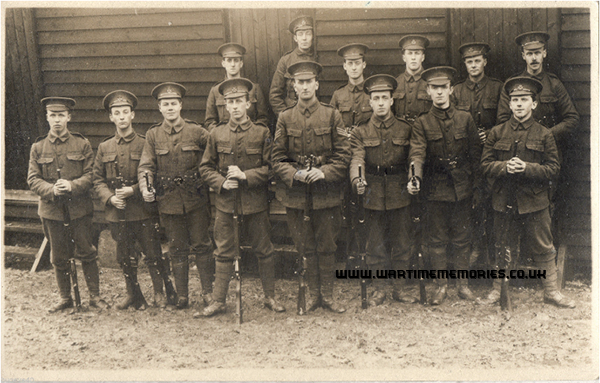
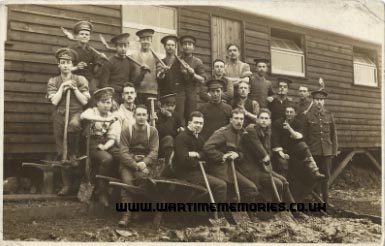
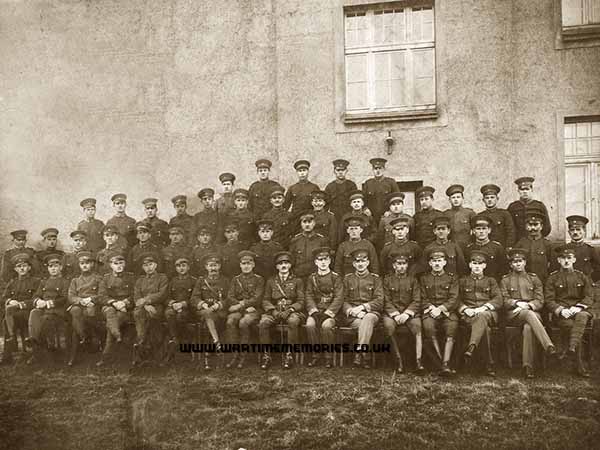

.jpg)


